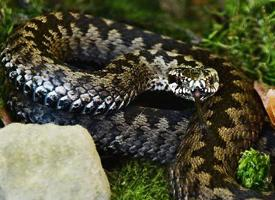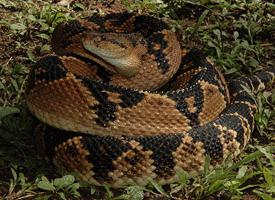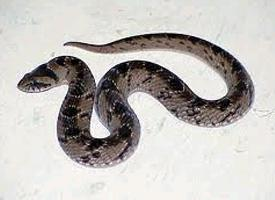
Animal description
The Common European Adder, scientifically known as Vipera berus, is a venomous snake native to a wide range of habitats across Europe and into parts of Asia. This species is renowned for its adaptability and can be found in various environments, from woodlands and heathlands to mountainous areas and even urban outskirts, showcasing a remarkable resilience and versatility in its living conditions.Adult Common European Adders typically reach lengths of 60 to 90 centimeters, with females generally being larger than males. Their physical appearance is characterized by a distinctive zigzag pattern running down the length of their back, set against a backdrop of varying colors that can range from grey, brown, to a reddish hue, depending on the individual and its geographical location. This patterning not only adds to their aesthetic appeal but also serves as an effective camouflage, helping them blend into their natural surroundings and evade predators.
One of the most fascinating aspects of the Common European Adder is its venomous bite, which it uses primarily to immobilize prey such as small mammals, birds, and lizards. Despite being venomous, the adder is generally shy and avoids human contact whenever possible. Bites to humans are rare and, while painful, are seldom fatal, thanks to the relatively low potency of the venom and the availability of medical treatment. However, caution is always advised when in the vicinity of these snakes.
The breeding season for Vipera berus occurs in the spring, following their emergence from hibernation. Males engage in a unique combat dance as a display of dominance to win over females. Unlike many reptiles, the Common European Adder gives birth to live young, typically in late summer, which allows them to give birth in areas that are not suitable for egg laying due to cooler temperatures.
The species plays a crucial role in the ecosystem, acting as both predator and prey. They help control rodent populations, which can benefit agricultural areas and reduce the spread of diseases. At the same time, they are a source of food for other predators, including birds of prey and larger mammals.
Despite their importance, Common European Adders face threats from habitat destruction, road mortality, and persecution due to fear and misunderstanding. While they are currently listed as Least Concern by the IUCN, their populations are declining in areas heavily impacted by human activity.
In conclusion, the Common European Adder is a fascinating and important part of Europe's natural heritage. Its presence in the ecosystem is a testament to the intricate balance of nature, and efforts to conserve its habitats and populations are crucial for maintaining this balance. Through education and conservation, we can ensure that future generations will continue to coexist with this remarkable species.
Similar Animals
New photos of animals
Top 10 animals
- Dolphin gull (Leucophaeus scoresbii)
- Diana monkey (Cercopithecus diana)
- Moustached guenon (Cercopithecus cephus)
- Galápagos tortoise (Geochelone nigra complex)
- Japanese macaque (Macaca fuscata)
- Stone loach (Barbatula barbatula)
- Russian tortoise (Testudo horsfieldii)
- Greek tortoise (Testudo graeca)
- Common flying dragon (Draco volans)
- Vendace (Coregonus albula)


